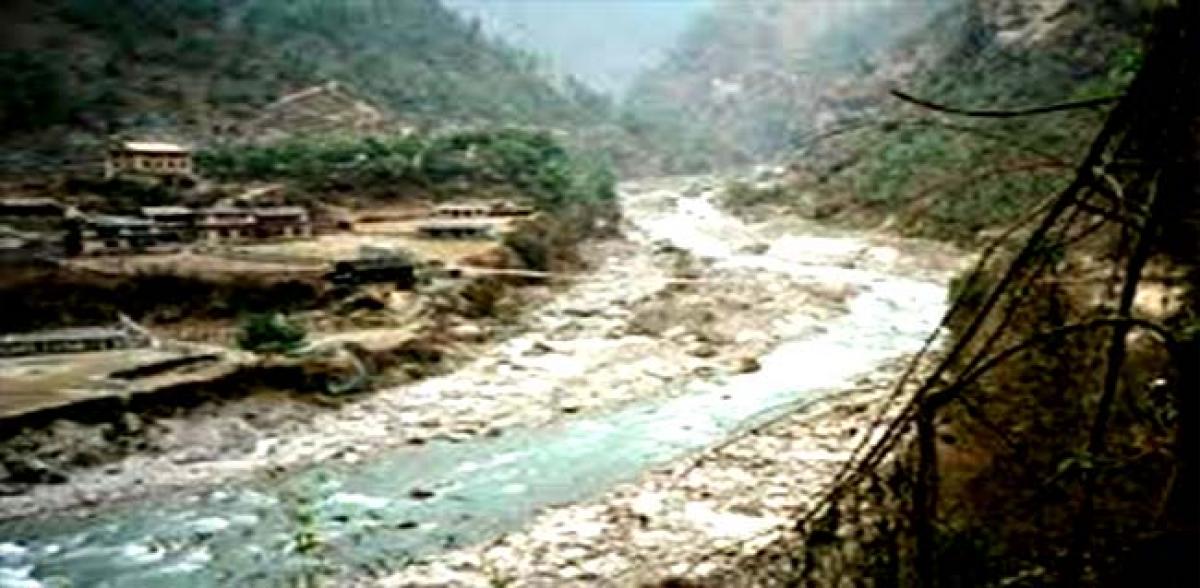Live
- Cop ends life over torture by wife, father-in-law in Bengaluru
- Indian Constitution longest and most beautiful, Kiren Rijiju lauds its inclusive character
- BSNL's Rs 333 Plan Challenges Airtel and Jio with 1300GB Data: Details
- PM Modi's appeal to buy Khadi garments leads to huge demand in Bihar's Samastipur
- Mohammad Amir announces retirement from international cricket
- Chandrababu supports One Nation, One Election System, says elections in 2029
- Cong not pursuing politics of vengeance: D. K. Shivakumar on Covid 'scam' FIR
- Mexican consulates to strengthen support for nationals in face of US deportation
- Minister Meghwal to table ‘One Nation, One Election’ Bill in Lok Sabha on Monday
- 3rd Test: Day one’s play at the Gabba called off due to persistent rain
Just In

They battle severe heat and cold as they try to focus on studies. And life seems bleak as the children of villages around the Kosi river belt in this north Bihar district sit on the damp floors of their ramshackle schools that resemble rickety shacks.
Supaul (Bihar): They battle severe heat and cold as they try to focus on studies. And life seems bleak as the children of villages around the Kosi river belt in this north Bihar district sit on the damp floors of their ramshackle schools that resemble rickety shacks.
"I need a school to study. Please arrange a school for me. After completing my studies I shall build a home for my family," 12-year-old Sanjana Mondal urged this visiting correspondent even as she tried to cover her face to avoid the sand that blew from the river bank.
Sanjana and thousands like her were displaced because of construction of the Grand Kosi Mahasetu. About 70,000 people in 62 villages began to migrate in 2010 after they lost land and home, says local activist Narayan Jee Choudhary. Only a few uprooted residents got compensation. Since then there has been no respite as nature battered them, year after year.
Sanjana's 'school', Utkarmait Madhya Vidyalaya, is located just below the Kosi embankment in Itahari village, about three kilometres from the National Highway 57 (East-West Corridor). Like her, there are about 352 students who attend classes I to VIII. But the school, if it can be called one, doesn't have a roof, no toilet and no fence.
Despite these odds, the children and their teachers dream of a better day when someone from the administration would notice their plight. But the promises made from the corridors of power in Patna sound hollow to them.
"Several people have asked us about the problems we face. But so far, even after so many years, nothing has changed," rued Sanjana.
The school's principal, Dashrath Prasad Yadav, pleaded helplessness. "We don't have a proper school building and no boundary wall. My students are not safe here. We don't have any other option but to continue like this," Yadav said.
A pall of gloom has enveloped this region. "I owned over 60 acres of land. But all of it is now submerged in water. Which means I cannot sell any land to send my daughter to a private school for higher studies," said Sanjana's father Yogendra Mondal.
And he's not the only one.
There are 327 families in Itahari village, mostly belonging to the Scheduled Castes, OBCs and minority community. Their stories are similar to the hazards faced by thousands of families in this belt.
The cloud of uncertainly hangs on villages like Rai Evam Sardar Tola, Kataiya Tola, Baltharba, Bhulia and Dholi in the Nirmali and Saraigarh Bhaptiahi blocks of the district.
Schools here are not fit to serve the purpose. Education is a tattered reality, even though the Nitish Kumar government claims to have built new schools in the state.
Reena, a Class 8 student in the Jhakarahi Dholi Middle School, portrayed a similar picture. "We don't have a proper school building... it's just a broken hut. We sit on the floor. We get drenched when it rains," she said, adding "there's no protection from the heat and the cold when the seasons change".
The Bihar government claims to have built over 100,000 additional classrooms since 2005 to revive the schools. The government also established 21,087 primary schools and upgraded about 19,581 primary schools to middle schools in the state between 2005 to 2015, according to published figures.
But these claims fall flat in Supaul district. So what is the district administration doing?
District Magistrate Baidyanath Yadav shrugged off the issue. "We don't have special funds with us for them," Yadav told IANS, suggesting that the images of the rickety schools be shared with the administration.
Seharsa Divisional Commissioner T.N. Bindhyeshwari said she wasn't aware of the condition of these schools. "I am not aware of the plight of these students. I will ask my officers to check the condition of the schools in these villages," Bindhyeshwari said.
Despite repeated attempts to contact him, Bihar's Education Minister Ashok Chaudhary did not respond.

© 2024 Hyderabad Media House Limited/The Hans India. All rights reserved. Powered by hocalwire.com







